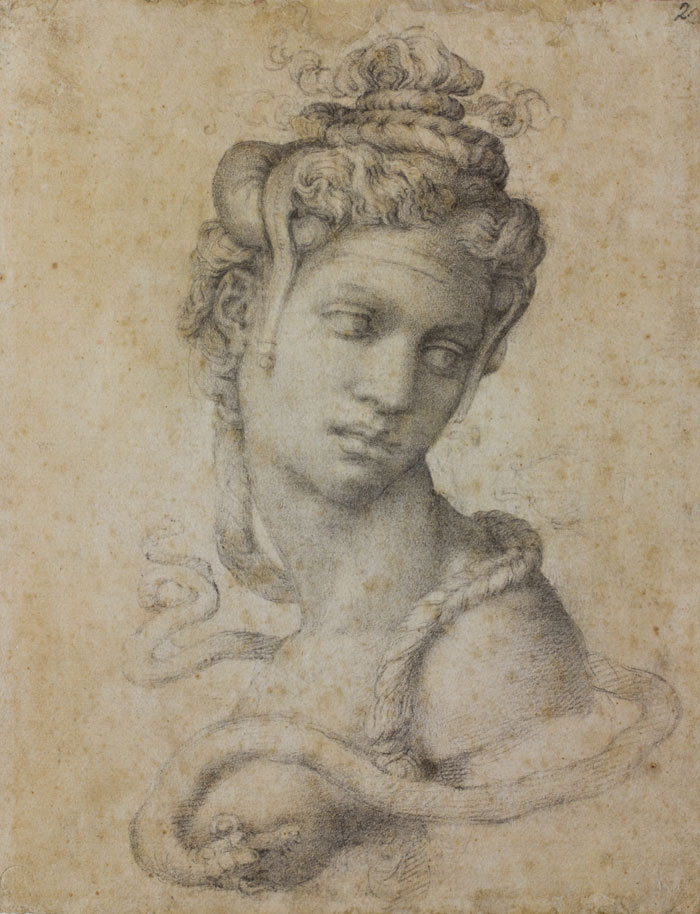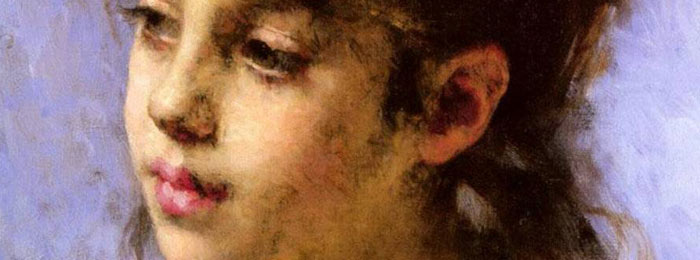Question from Madelyn
I want to sign up for the Drawing Academy course because I can’t draw portraits.
I downloaded a bunch of faces – all ages, genders and ethnicity, with and without hair. I tried to print them out as close as possible in size to real faces. Then I take one, stick it up on the wall and try to draw it freehand. Then I check by measuring with a stick. When I think I’m done, and when I think I’ve done all I can do, I take the photo off the wall and put it right next to my drawing. Every single time, something or other is off—the mouth, the nose, the shape of the face… I put the download on a sunny window and put my drawing on top to see if they match. The locations of the features are right on target, but the nuances are always off. I have to erase and fix, erase and fix, over and over.
The end result is that the finished drawing resembles the subject matter, but always something is off. I do one a day. It takes me hours. I’m tired and disgusted. Months I’ve been doing this.
Am I ever going to get to the point where I can sit down, draw a face, and get the right results?
Hi Madelyn,
Many thanks for your story. You are not alone; there many self-taught artists who have a burning desire to get better in drawing but fall into the erroneous trap of learning in the wrong way and ending up with frustration.
The way you are learning to draw portraits won’t get you good life drawing skills. Even more important, the more you practice what you do, the harder it will be to draw portraits from life or imagination.
Here’s why.
Drawing portraits from life requires a completely different set of skills. What you do is called “copying.” You are drawing what you see on a flat photograph instead of drawing what you know about a human head proportions and anatomy, and this will always result in mistakes.
The fundamental thing missing from your exercise is constructive drawing. Even though you are measuring with a stick and maybe using a triangulation method to plot points and angles of facial features, this is still copying a two-dimensional image.
I know, it might be hard for you to distinguish the difference in value of learning by drawing from a photograph and drawing from life. Trust me, it is as dramatic as trying to live in a virtual house painted on a concrete wall rather than living in a real three-dimensional building.
In your current drawing exercises, you are working on the following skills:
- judging flat dimensions and areas
- copying outlines of a head and facial features
- shifting facial features across a flat plane
- trying to achieve likeness in linear drawing
- judging and copying tonal values already present in a photo, repeating by hand a photographer’s job
Doing so, you’re destined to fail from the start because photo equipment will do a better job than you.
There is nothing wrong in those skills; they are very needed for someone who has decided to become a reproducer, not an original fine artist.
However, if your goal is to become an artist, you need to develop different skills.
Above all, such skills include constructive drawing; here are just few of them:
- judging proportions of three-dimensional objects
- “building” constructive elements of volumes
- understanding and depicting spatial relationships between objects
- knowing and applying proportions of a human head
- understanding and using a human anatomy in drawing
- knowing and employing the right type of linear perspective
- understanding and using aerial perspective
- knowing how foreshortening works and depicting it realistically
- knowing the difference between outlines and contours
- using virtual contours to reveal three-dimensional shapes
- drawing contours instead of outlines for foreshortened objects
- using constructive helping lines of symmetry
- using lines of angles, alignments, and cross-sections
- drawing objects as if they are transparent
- knowing the step-by-step sequence of drawing a portrait
- having a good understanding of portrait drawing know-how
- and so on…
As you see, the list of skills you are currently working on is very different to the list of proficient portrait drawing skills.
Copying a portrait from a photo essentially comes down to two things — outlining a head and facial features on paper and embellishing linear drawing with tonal values or colors. This is similar in principle to filling in a coloring book.
When it comes to drawing portraits from life, an artist must draw what one knows, not what he or she sees.

Here’s the challenge in drawing from life: you don’t see what you don’t know. Drawing happens not on paper but in an artist’s head. If fundamental principles of constructive drawing are missing, an artist will always have challenges with drawing from life, memory, or imagination.
Here’s just one example — if you don’t know that the base of the skull is on the same level as the first vertebra of the spinal column (where the rotating axis of the head is) and this level coincides with the lower edge of the cheekbones and the base of the nose, you won’t see the correctness of these alignments in your drawing.
There are two aspects to learning to draw proficiently:
1. You need to learn the right information and technique on how to draw the right way.
2. You need to practice drawing, putting your new knowledge into work.

Self-teaching will take much longer and not necessarily give you right results. You need good tutors, who are not only good teachers but also professional artists.
If you don’t have an opportunity to go to an art college and spend up to $100,000 and four years of your life learning art (that would not guarantee good results, by the way), you best option is to enroll in a good online drawing course.
Here’s where we can help you. The Drawing Academy course has been created for artists like you, who want to learn fundamental principles of classical drawing in the comfort of your home, study at your own pace, and have unlimited personal support by professional tutors, which is provided for a lifetime at no extra cost.
To your creative success,
Vladimir London
Drawing Academy tutor






Dear Vladimir
Thank you very much for your explanation.
It is very helpful, it gives complete sense of difference between copying a flat image and drawing from understanding the basic proportions.
Thank you once again for this valuable article.